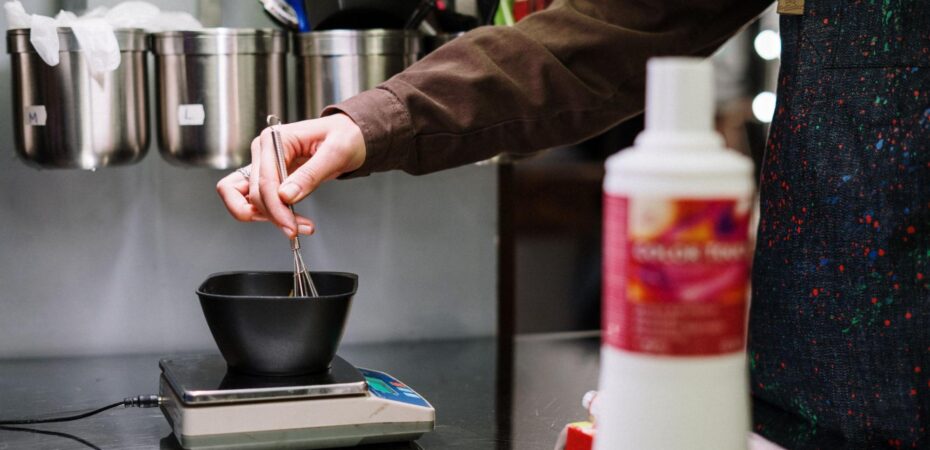What Happens if You Put Blonde Dye on Purple Hair
If you put blonde dye on purple hair, you may end up with unexpected results. Mixing these two colors can lead to a variety of outcomes, depending on the shade of purple and the strength of the blonde dye.
In some cases, the purple color may neutralize or cancel out the blonde tone, resulting in a muddy or grayish hue. This happens because purple is on the opposite side of the color wheel from yellow (the base color of most blonde dyes), and they can counteract each other when combined.
The Impact of Blonde Dye on Purple Hair
Have you ever wondered what happens if you put blonde dye on purple hair? Well, let’s dive into the fascinating world of hair color transformations and explore the potential impact that adding blonde dye to purple hair can have.
- Color Interaction: When you apply blonde dye onto purple hair, a unique color interaction occurs. The result will largely depend on the underlying shade of purple and the intensity of the blonde dye used. In some cases, the vibrant purple might blend with the blonde tones, creating a softer pastel hue. On the other hand, if the purple is deep and intense, it could create an interesting contrast against the bright blonde highlights.
- Toning Effects: Blonde dyes often contain toning agents that can neutralize or modify unwanted undertones in your hair. If your purple hair has any warm undertones like orange or yellow, applying a cooler-toned blonde dye might help balance out those colors. This can give your overall look a more harmonious and balanced appearance.
- Lightening Potential: One significant impact of using blonde dye on purple hair is its ability to lighten certain areas depending on how it interacts with different sections of your locks. For instance, if you have lighter shades of purple in your hair, they may be more receptive to lightening effects from the blonde dye compared to deeper or darker shades.
- Maintenance Considerations: It’s important to note that maintaining a vibrant and long-lasting result when combining these two colors requires special care and attention. Both blonde and vibrant colors tend to fade over time due to washing, sun exposure, and other factors. To keep your new look fresh and vibrant for longer, using color-safe shampoos and conditioners specifically designed for colored hair is highly recommended.

Potential Results And Color Transformations
The Effects of Blonde Dye on Purple Hair
Blonde dye is typically lighter in shade than purple hair, which means that the outcome will largely depend on the existing color and condition of your purple locks. Here are a few possible effects that you might encounter:
- Lightening: Blonde dye has the ability to lighten dark or vibrant shades of purple hair, making it appear lighter overall. This lightening effect can range from subtle highlights to a complete transformation into a new shade.
- Color Shifts: Depending on the undertones present in both your blonde dye and purple hair, you may experience color shifts when combining these two hues. For instance, if your purple hair leans more towards blue undertones and you apply warm-toned blonde dye, it could result in an interesting mix of purplish-pink or lavender hues.
- Toning: If your intention is not necessarily to achieve a dramatic change but rather to neutralize any unwanted brassiness or yellow tones in your purple hair, applying blonde dye can act as a toner. It can help balance out the colors by adding cooler tones and giving your locks a more harmonious appearance.
Understanding Color Transformations on Purple Hair
To fully comprehend how color transformations occur when using blonde dye on purple hair, we need to delve into some basic principles of color theory:
- Color Wheel: The color wheel is an invaluable tool for understanding how different colors interact with each other. When considering the effects of blonde dye on purple hair, we must consider their position on the wheel: opposite colors tend to neutralize each other while adjacent shades create harmonious blends.
- Pigment Dilution: When applying blonde dye over purple hair, the pigments in the dye mix with the existing pigment of your hair. This interaction can result in a dilution effect, where the final color is a combination of both hues rather than a complete replacement.
Factors to Consider Before Applying Blonde Dye on Purple Hair
Before you reach for that bottle of blonde dye, it’s important to keep a few factors in mind:
- Hair Porosity: The porosity of your hair plays a significant role in how well it will absorb and retain color. Highly porous hair may soak up more of the blonde dye, resulting in a more intense transformation, while less porous hair might require additional processing time or multiple applications to achieve desired results.
- Hair Condition: Bleaching or lightening your hair can be damaging, especially if it has already been chemically treated or is prone to dryness and breakage. Prioritize maintaining the health and integrity of your locks by using appropriate products and seeking professional advice when needed.
- Patch Test: Performing a patch test before applying any new color treatment is crucial to avoid unwanted allergic reactions or adverse effects on your scalp and hair. Apply a small amount of the product on an inconspicuous area at least 48 hours prior to full application.
In conclusion, while experimenting with different hair colors can be exciting, it’s essential to approach them cautiously and seek professional guidance when dealing with complex combinations like putting blonde dye on purple hair.


 By
By 




